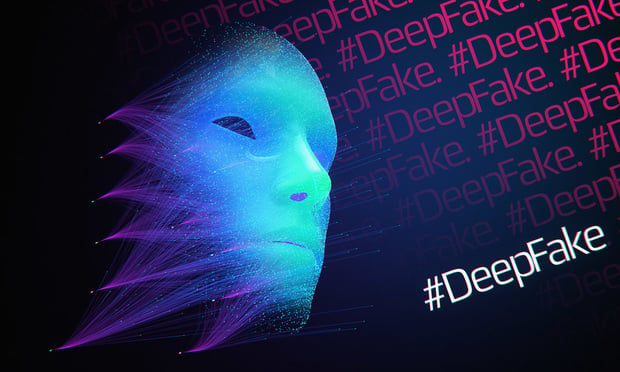Features

Supreme Court Set to Address Procedural Inconsistencies and Claims of Unconstitutional Vagueness Attributed to CAFC
The U.S. Supreme Court is set to commence its term on October 6. Among the cases it will review are several appeals concerning copyright and trademark law. One notable case seeks to address procedural inconsistencies and claims of unconstitutional vagueness attributed to the U.S. Court of Appeals for the Federal Circuit.
Features

WTF? Round Two: The Federal Circuit Grants Brunetti (and Trademark Owners) a Reprieve
In August, the Federal Circuit issued a surprisingly self-critical ruling in the long-standing dispute between Erik Brunetti and the USPTO over Brunetti’s efforts to register the term F*CK for a wide variety of goods and services. The Federal Circuit concluded that the Board’s decision in In re Brunett lacked sufficient clarity and therefore vacated it for further proceedings, which although facially unremarkable, may not only prove to be a boon to Brunetti, it may also be highly beneficial to many trademark owners who have been forced to wrestle with failure-to-function refusals.
Features

AI Against Counterfeits: How Smart Technology Is Reshaping Brand Protection and Platform Accountability
As AI becomes more sophisticated at detecting fakes, it is not just changing how brands protect themselves — it has the potential to change the legal framework for determining when platforms themselves might be held responsible for the counterfeits sold on their sites.
Features

Post-SCOTUS District Court Ruling In Jack Daniel’s v. VIP Products Reshapes Trademark Dilution Jurisprudence
For companies developing novelty products, advertising campaigns, or brand-related parodies, this case underscores the importance of reviewing both confusion and reputational risks. For rights holders, it affirms that parody is not a license to defame a brand.
Features

OpenAI Gets Summary Judgment In Trademark Battle With Open Artificial Intelligence
A trademark battle that pitted technology giant OpenAI against a company known as Open AI (note the space between the terms) has resulted in a summary judgment that has ordered the smaller enterprise to cease use of the name and its prized internet real estate, open.ai.
Features

Successful and Enforceable Brands Connect with the Consumer: Lessons from a Recent 10th Circuit Decision
Protectable rights are created the same way a successful brand is established — linking your Mark and your company’s offering in the minds of the consumer is a must. The good news? Regardless of your company’s size or marketing budget, this necessary connection can be achieved.
Columns & Departments

IP News
“Not Merely Monkey Business”: The Bored Ape Case and NFT Branding in the Ninth Circuit
Features

The Suspension Bridge Effect: Why Trademark Attorneys Must Protect Entire Brand Systems, Not Just Individual Marks
In brand protection, as in bridge engineering, the strength of brand differentiation (trademark distinctiveness) depends on the integrity of each supporting cable. When one snaps, the question is not only whether you can fix that component, but also whether the whole structure will hold together long enough for the repair crew to arrive.
Features

Tea Leaves Tell Tales: Jury Awards $2.36 Million for Bigelow’s “Manufactured in the USA 100%” Label
On April 8, a California jury found that R.C. Bigelow, Inc., the well-known manufacturer of Bigelow teas, intentionally or recklessly misled consumers by claiming that some of its teabags were “Manufactured in the USA.” The price for this mislabeling was steep, with the jury awarding the class action plaintiffs $2.36 million.
Features

Beyond the Logo: How AI Complicates Trademark Protection In the Digital Age
Today, building brands solely on the promise of a different product or service has become unsustainable. Any “new and improved” feature or benefit is quickly eclipsed by competitors. Consequently, brands signal category superiority not through rational claims, but by reinforcing a distinct persona — a “ness” comprised of distinguishing traits and behaviors that form an ownable brand essence difficult for competitors to replicate.
Need Help?
- Prefer an IP authenticated environment? Request a transition or call 800-756-8993.
- Need other assistance? email Customer Service or call 1-877-256-2472.
MOST POPULAR STORIES
- Compliance Officers: Recent Regulatory Guidance and Enforcement Actions and Mitigating the Risk of Personal LiabilityThis article explores legal developments over the past year that may impact compliance officer personal liability.Read More ›
- Internet Goods and Product LiabilityThe Internet's value arises in part from its ability to provide images, data and content quickly and at little cost. This ability results from the fact that Internet products — whether they be images, data or content — are each reduced to a digital format. Sharing products that have been so reduced may result in product liability.Read More ›
- How Far Can You Reach? The Territorial Limits of Lanham Act Infringement and False Designation of Origin ClaimsOn June 29, 2023, the U.S. Supreme Court set new geographic limits for infringement and false designation of origin claims raised under Sections 1114 and 1125(a) of the Lanham Act. Given the global nature of business today, the decision highlights the need for trademark owners to continually reassess and, perhaps, expand their international trademark registration strategy as product lines and brands become more international in scope.Read More ›
- Making the Office a Destination: The Rise of Hospitality In Law FirmsThe law firm office cannot remain unchanged, therefore, as if frozen in time set to some date prior to the onset of pandemic, when all the terms and meaning have all changed. In fact, the office must now provide benefits or an experience the lawyers and staff cannot get at home.Read More ›
- The DOJ's Corporate Enforcement Policy: One Year LaterThe DOJ's Criminal Division issued three declinations since the issuance of the revised CEP a year ago. Review of these cases gives insight into DOJ's implementation of the new policy in practice.Read More ›
